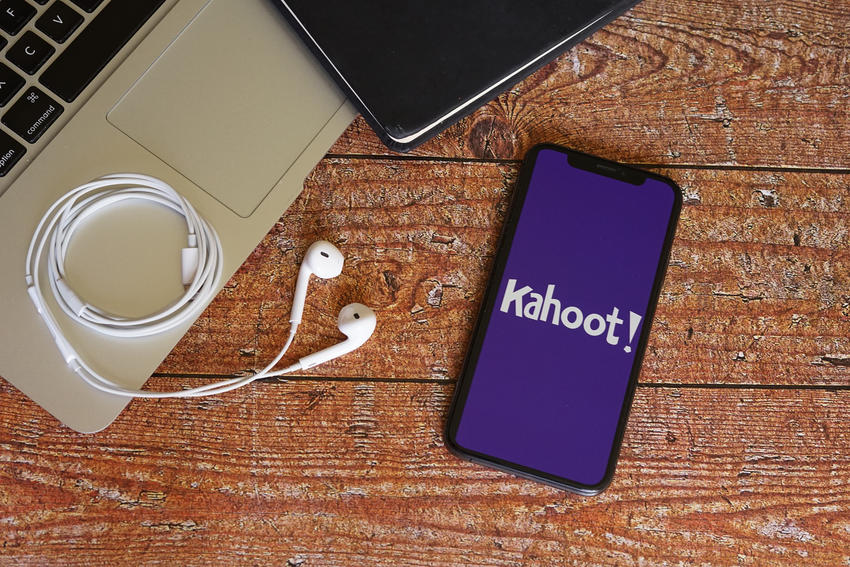Enhancing classroom engagement in the pandemic and beyond

Across programs and subjects at the School of Dentistry, faculty members pride themselves on their innovative, engaging teaching styles. Whether didactic or clinical, courses encourage active learning and hands-on experiences. But what happens when “hands-on” is no longer an option?
When didactic courses switched to Zoom in 2020, dentistry faculty faced new barriers to student engagement. Kristin Shingler, PhD, experienced this challenge with dental hygiene, dental therapy and DDS learners in her biochemistry and microbiology courses. She wasn’t sure how to employ active learning strategies, so she came up with an idea and brought it to Cyndee Stull, DHSc, MDH, RDH, and Keeley Flavin, BSDH ’16, MSDH ’21: If we can’t bring students in for active learning, why not bring the active learning to them?
Shingler presented the idea of using Kahoot, a game-based, online educational tool that promotes engaged and active learning, in her classes. Stull and Flavin loved the idea—so much that they put together a plan to implement a premium subscription to the program and study its effectiveness in multiple classrooms.
“It has been a successful tool in higher education settings, including medical and dental schools, allowing for immediate feedback from real-time formative assessments,” explained Flavin, who took the lead on the project.
Though the study began as a response to online classes, she hoped it would prove impactful in online and in-person classroom setups. “The current generation of students grew up with smartphones and computers, and these devices are how they receive and process new information,” she explained. “Whether our learners are in-person or online, Kahoot offers the potential for increased engagement.”
In an effort to expand access to Kahoot and better test its effectiveness across a variety of classrooms, Flavin and Stull applied for and received a 2021 Technology Enhanced Awards for Teaching and Learning award. A fund available to full-time faculty members, TEATL awards grant funds to projects that support the acquisition of new technologies that will impact the teaching and learning environments of the institution.
Flavin and Stull used the grant to purchase sixteen premium Kahoot subscriptions, advertising the subscriptions to teaching faculty. “There was a lot of interest right from the start,” Flavin said. “A lot of teachers were really excited about the new tool they could use over Zoom lectures, then easily transfer into the classroom.”
The premium subscription’s availability was a highlight, Flavin explained, because of the ability to include personalizable quizzes, questions or challenges. Faculty use the resource to pre-assess knowledge, engage learners throughout the lecture and gauge the class’s understanding of a topic. “I think this is huge,” Flavin said. “I can ask material-specific questions and get quality feedback, plus a depiction of how well my students are following and understanding the material.”
With the TEATL funds, fourteen instructors have implemented Kahoot in didactic courses covering DDS, dental hygiene and dental therapy students. Flavin and Stull solicited feedback both from faculty and students to better understand the impact of the resource.
Flavin was surprised to learn that most students had already used Kahoot in another capacity, so they were familiar with the program when it was implemented in their classrooms. “They enjoy using Kahoot in their classes,” Flavin said. “Many respondents said it was fun, kept them engaged and helped them prepare for exams.”
In fact, students enjoyed it so much that “an overwhelming number of students said they’d like to see it used in all of their classes,” Flavin said. She noted that students especially hoped the program could be used in complex lectures.
Instructors also reported enjoying the tool. “I was happy to see that all of the respondents so far agreed that Kahoot is easy to learn,” she said. “They like it as an active learning tool to gauge retention. They feel students using their own devices provides a good response system, and they find it interactive and engaging.”
While quantitative data is still being analyzed, Flavin is pleased with the results of the project thus far and is excited to continue implementing Kahoot in classrooms and studying its reception. “The more feedback we get, the better we can understand how and where to best use this learning tool,” she said. She is excited to see how Kahoot can support color groups, interprofessionalism among dental care teams and increased critical thinking in patient care scenarios.
